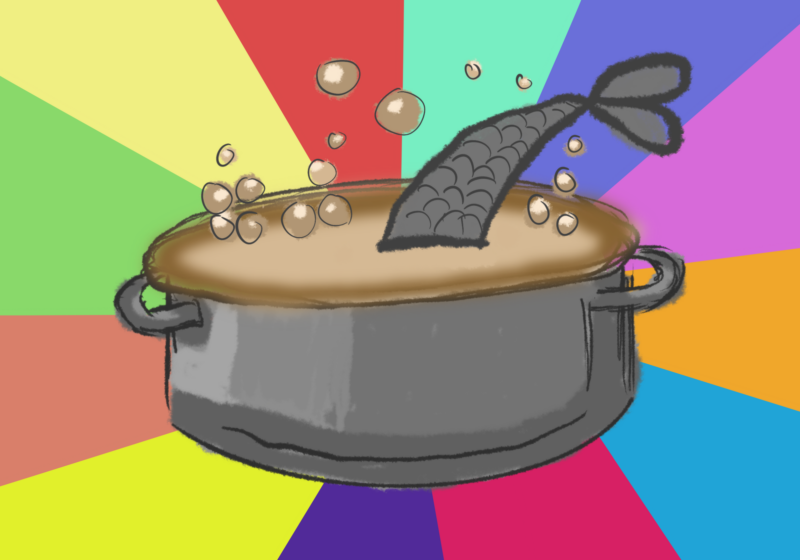As this semester progresses, the unfolding of the Jaeger case has unquestionably rattled UR to its core. As a Take Five scholar, never before have I seen a campus controversy garner so much recognition — to the point of being featured in The New York Times and Nature. I am also struck by the swift administrative measures taken to address the uproar following the federal report’s circulation. Undoubtedly, these actions resulted, at least in part, from the immense student support for Professor Celeste Kidd and other plaintiffs in confronting a patriarchal academy designed to suppress the voices of women.
The outpouring of student and alumni support over this case is promising because it demonstrates the extent to which our student body will stand in opposition to institutional sexism and sexual misconduct. Nevertheless, I cannot help but wonder why this particular injustice energized scores of (primarily white) students to embrace campus activism for the first time — and with sufficient vigor to draw national media attention. In truth, if the Jaeger case functioned as the tipping point that awakened you to injustice and drew you into the perils and politics of student activism, welcome, but you are quite late to the party.
I certainly do not wish to minimize the severity of the Jaeger case, which absolutely deserves all of the awareness and outcry it is currently receiving. But I would like to point out to the mass of nascent white student activists that just now mobilizing yourselves is akin to consistently arriving 30 minutes into a 50 minute lecture — you have missed the key takeaways, and you have a lot of catching up to do.
White students have had a myriad of opportunities to bolster the efficacy of other past activist movements to Jaeger-case levels, but have consistently failed to do so. Where was this meticulous and sweeping response among white students and alumni when a student hung a Confederate flag in a window of his fraternity house? Where was this response when Douglass Leadership House was vandalized, and its members were verbally assaulted over Yik Yak? Where was this response during fall 2014, when students (largely of color) rallied against racial injustice on campus? Where was this response when Ben Shapiro was invited to campus to spew racist and transphobic remarks in the spirit of “free speech?” Where was this response when armed Public Safety officers were deployed at the Medical Center despite their inability to ensure the protection of black bodies? Where was this response when Islamophobic remarks were made against Muslim students after the Muslim ban was broadcast? Where was this response following the announcement of DACA’s intended rescindment?
Current students may not have been enrolled during some of these incidents, but we still must account for the fact that none of the above incidents generated the same public spotlight, or the same magnitude of dissent from white students and alumni, compared to the Jaeger case. In thinking about race and gender, the Jaeger case is particularly accessible to white students because it offers a tangible example of injustice involving predominantly white, heterosexual stakeholders. As such, students reflecting these social identities have an easier time relating to and educating themselves about this case (hence the massive public response of white students and alumni). In contrast, white students have more difficulty grasping the injustices faced by minority student groups. Frankly, this directly results from white privilege: Because many of these issues fail to detrimentally affect our lives personally, we have no need to invest time and energy into learning about and resisting them. To qualify this, white students, ask yourselves: Would you have been equally as outraged and outspoken if the plaintiffs were all women of color, LGBT community members, or both?
Until the culture surrounding campus activism increasingly adopts intersectionality, especially among white student activists, we will continue to witness the prioritization of white, heterosexual injustice at the expense of minority struggles. This is precisely why we must strengthen white vanguardism: white students particularly sensitive to the issues facing minority groups on campus, who function to disperse this knowledge to collectively raise the social consciousness of the white student body. Put simply, white students must actively recruit other white students to advocate for social change addressing the needs of more than just the white, heterosexual student population.
I am calling specifically for heightened white vanguardism because it is unacceptable to continue placing the burden of spreading awareness on students of color and other minority groups. It is not the job of minority students to insert themselves into exclusively white spaces to explain their continuous oppression and pain. It is an exhausting, damaging, and potentially dangerous experience.
White students can never fully empathize with the experiences of minority students, but understanding the basics of identity politics practically qualifies as vanguard in my book. With this in mind, I would argue a large portion of the white study body is already in the vanguard position. Yet, hardly a day goes by where I do not overhear a problematic conversation among a group of white students. White vanguards, these are the situations where you must step up and insert yourself into the conversation to address intolerance. I am not saying be combative or hostile, but a simple, “Hey, I think some people might find that statement offensive,” will go a long way. This might seem uncomfortable at first, but your action is crucial because it earnestly orients white students to the basics of injustices facing minority students. Importantly, it also aligns whites with the goals of minority student activists without requiring the presence and effort of said minority students. In my personal experience, white friends and even total strangers have been overwhelmingly receptive to this strategy, and numerous other successful approaches to vanguardism exist that are easily searchable with Google.
The details alleged in the federal complaint are deplorable. My heart goes out to any plaintiff enduring institutional sexism and immobilizing bureaucracy, and I can only hope justice is swiftly delivered. But diversity at UR is certainly not going away, and indeed, it will only continue to expand. The Jaeger case has revealed a blatant imbalance of scope with respect to campus activist movements, with white student activists concentrating on incidents primarily concerning other white students. White vanguards are in the unique position to improve this disparity through conversations with their fellow white peers. I am certainly not proposing to constantly have the “vanguard hat” on. However, student activist initiatives have the potential to be stronger, more inclusive, and beneficial for everyone if we can push the white student body to fully acknowledge and dismantle the obstacles facing minorities at this university.
Correction (10/31/17): This piece originally referenced a federal report. There is no such report — only a federal complaint.





